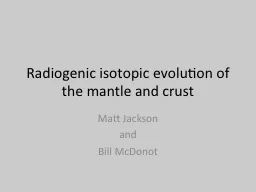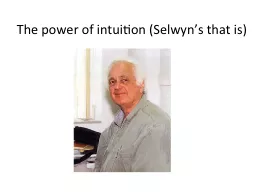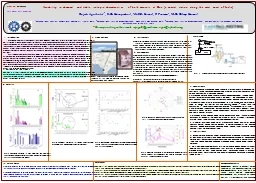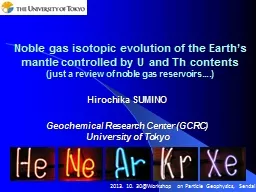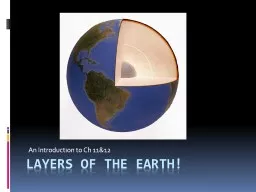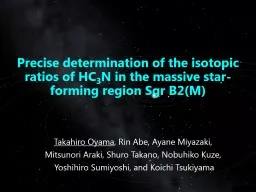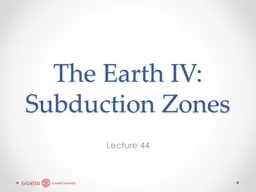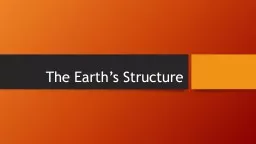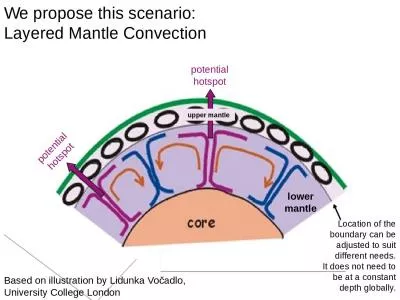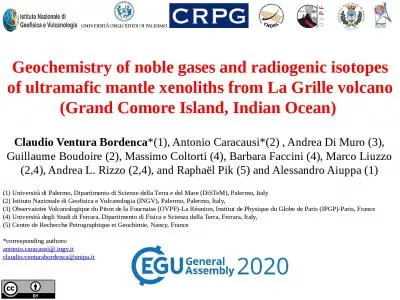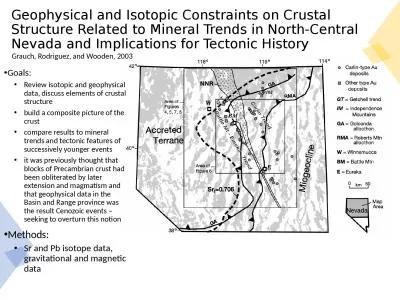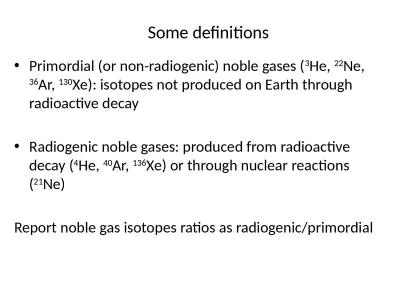PPT-Radiogenic isotopic evolution of the mantle and crust
Author : liane-varnes | Published Date : 2016-04-23
Matt Jackson and Bill McDonot SrNd isotope plot Global OIB ocean island basalts hotspots and MORB midocean ridge basalt We will model SrNd isotopic evolution
Presentation Embed Code
Download Presentation
Download Presentation The PPT/PDF document "Radiogenic isotopic evolution of the man..." is the property of its rightful owner. Permission is granted to download and print the materials on this website for personal, non-commercial use only, and to display it on your personal computer provided you do not modify the materials and that you retain all copyright notices contained in the materials. By downloading content from our website, you accept the terms of this agreement.
Radiogenic isotopic evolution of the mantle and crust: Transcript
Download Rules Of Document
"Radiogenic isotopic evolution of the mantle and crust"The content belongs to its owner. You may download and print it for personal use, without modification, and keep all copyright notices. By downloading, you agree to these terms.
Related Documents

